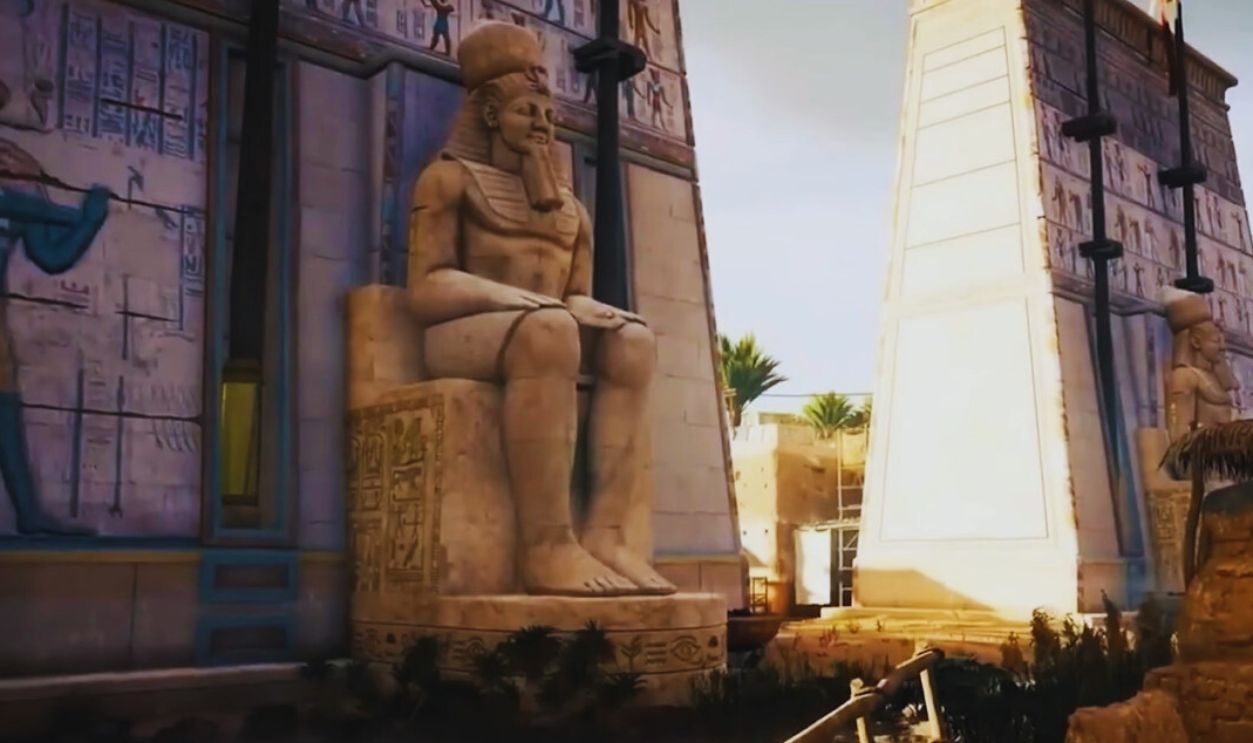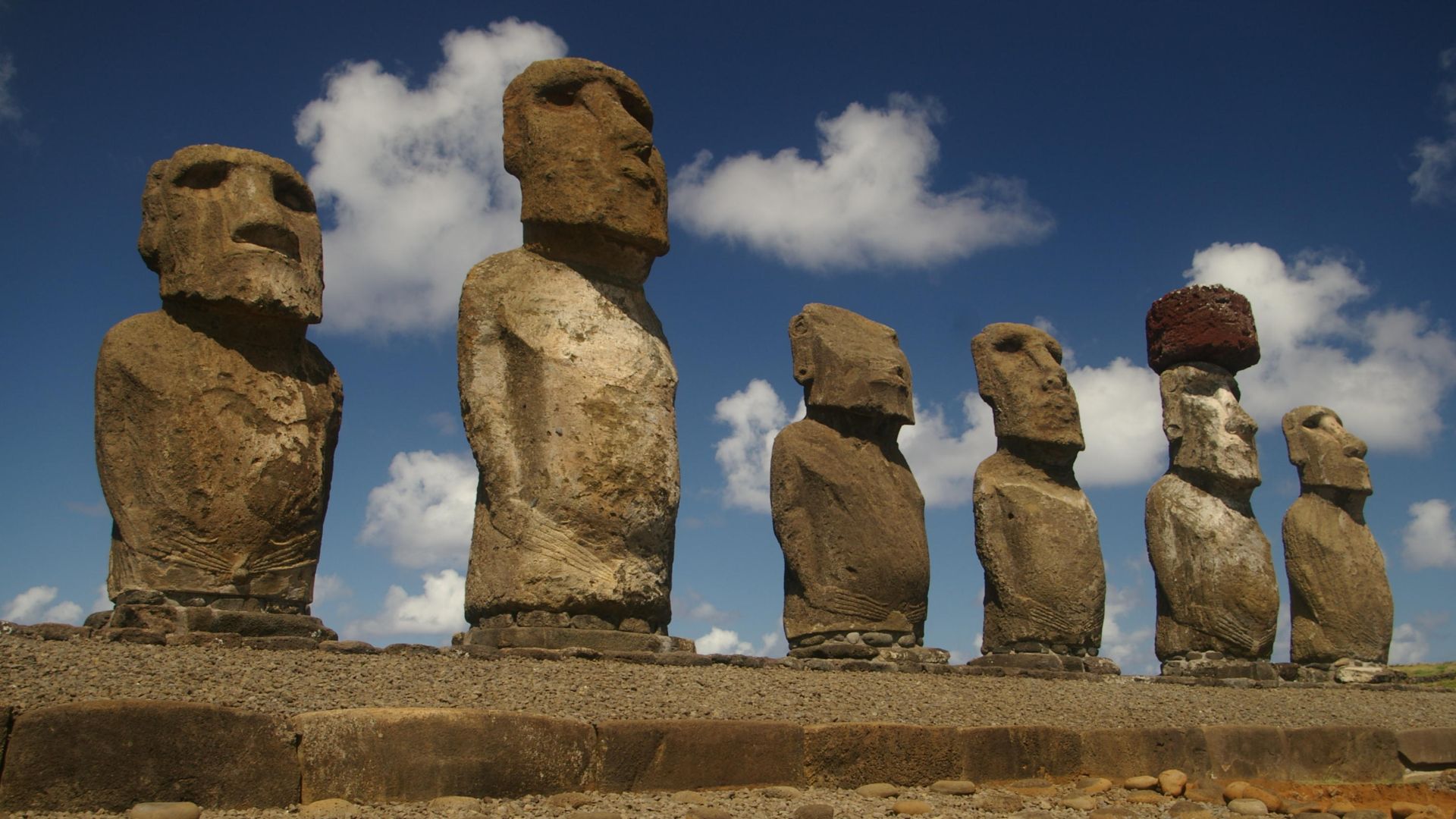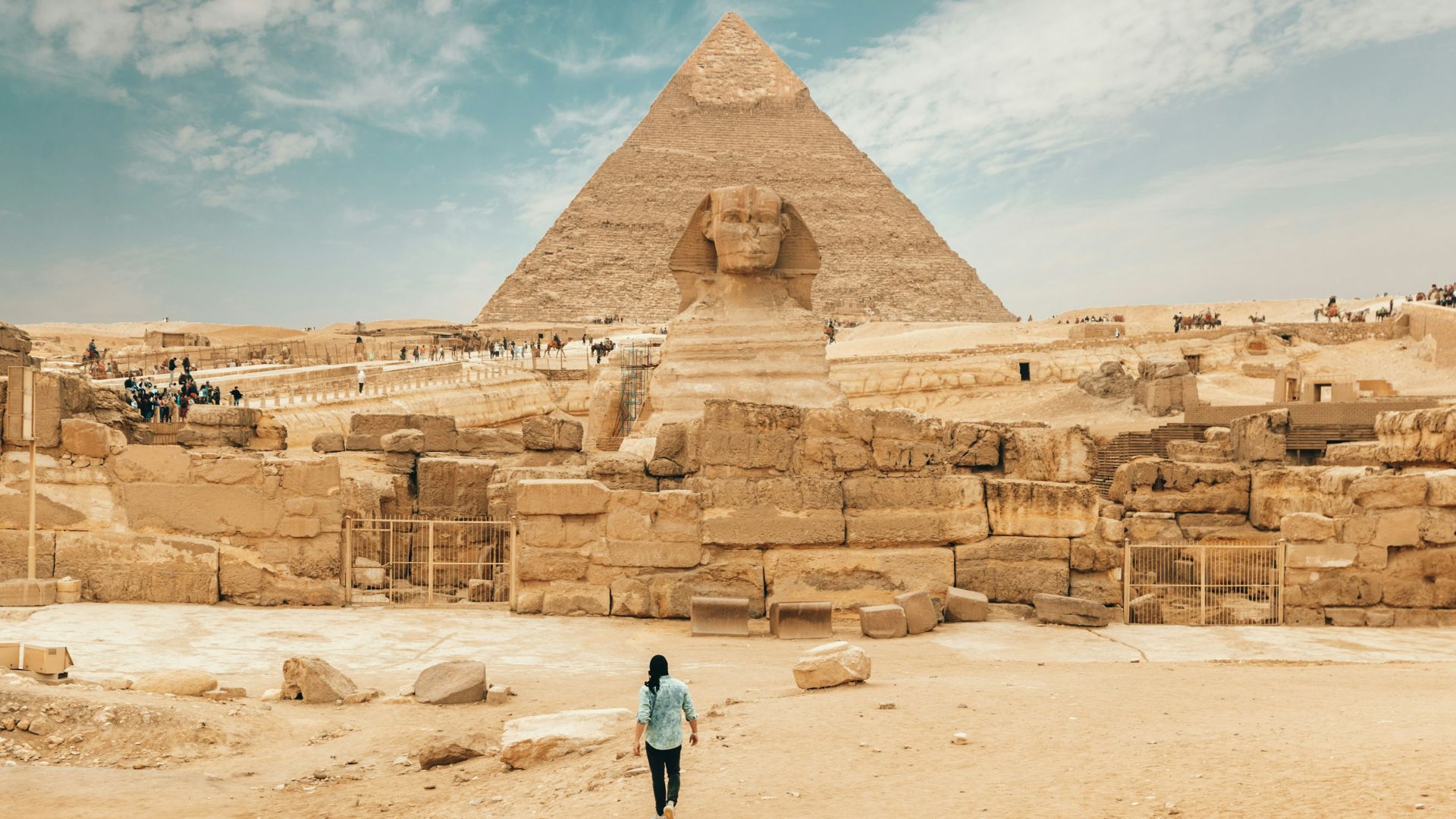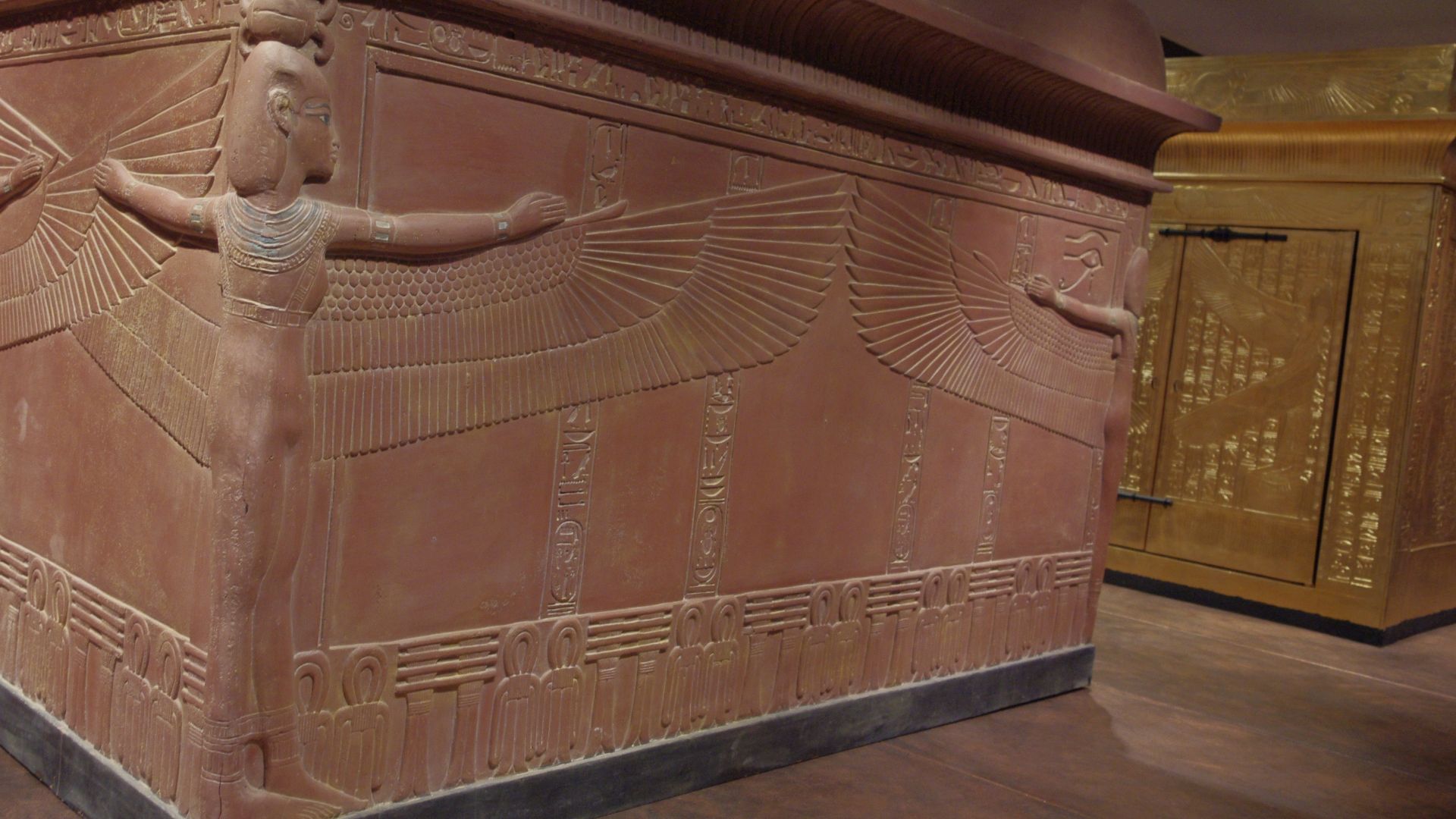A Labyrinth Beneath Egypt
Beneath the crumbling remains of an unassuming pyramid in Egypt lies something that could turn the entire human timeline upside down. What if everything we thought we knew about early civilizations was wrong?

Discovering A Forgotten World
Beneath Egypt's deserts lies a secret that could change our entire understanding of ancient history. Until recently, this mystery lived mostly in legend. Thanks to satellite imaging and curious minds, we're closer than ever to uncovering what it is.
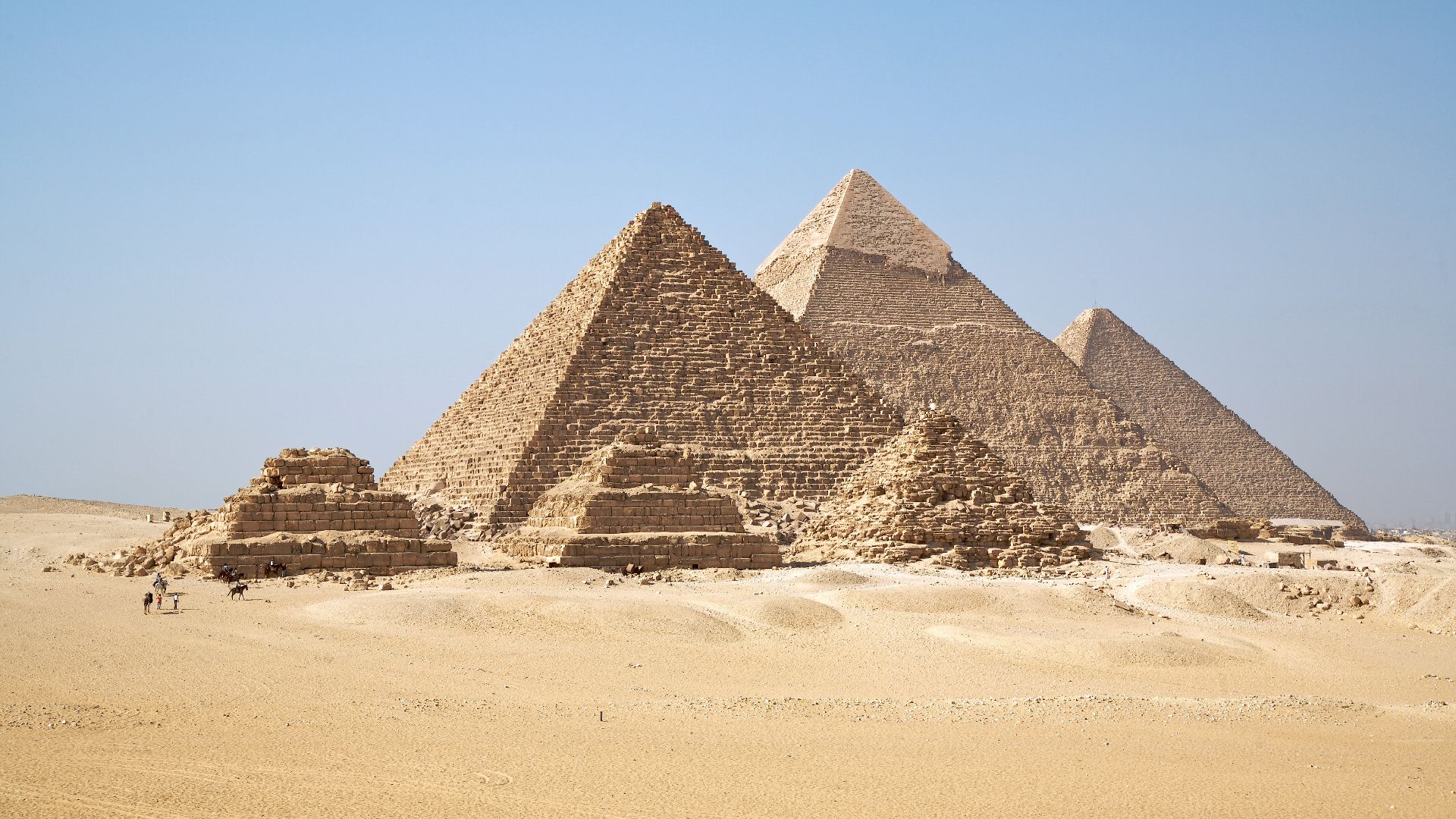 Ricardo Liberato, Wikimedia Commons
Ricardo Liberato, Wikimedia Commons
A Mysterious Paper That Shook The Timeline
In 2023, a jaw-dropping academic paper surfaced titled "The Labyrinth, The Colossi, And The Lake". Using satellite-based scanning and geophysical data, the authors found compelling evidence of vast underground chambers beneath Hawara, Egypt. This isn't conspiracy theory fuel; it's data-backed intrigue.
Could This Rewrite Everything We Know About Ancient Civilizations?
This discovery hints that an advanced, organized society may have thrived long before the Ancient Egyptians ever wrapped their first mummy. However, those against the theory insist that it contradicts traditional dating methods. So maybe history's timeline had been playing tricks on us.
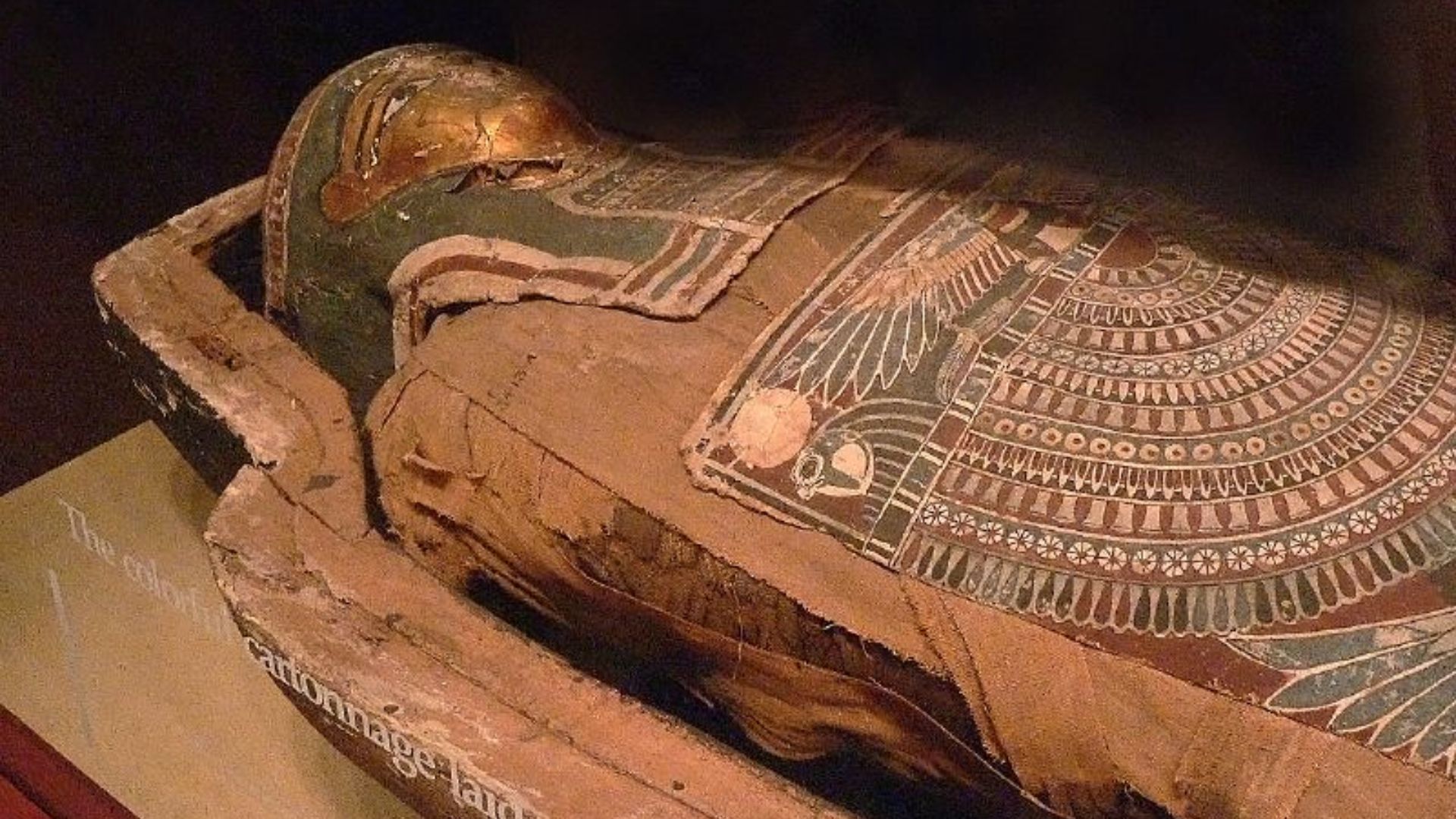 Mary Harrsch from Springfield, Oregon, USA, Wikimedia Commons
Mary Harrsch from Springfield, Oregon, USA, Wikimedia Commons
A Growing Field Of Curiosity
Interest in prehistoric civilizations is snowballing faster than a YouTube conspiracy rabbit hole. More and more researchers, both fringe and mainstream, are digging into sites that defy straightforward explanations. Theories that were once laughed out of lecture halls are suddenly getting second looks.
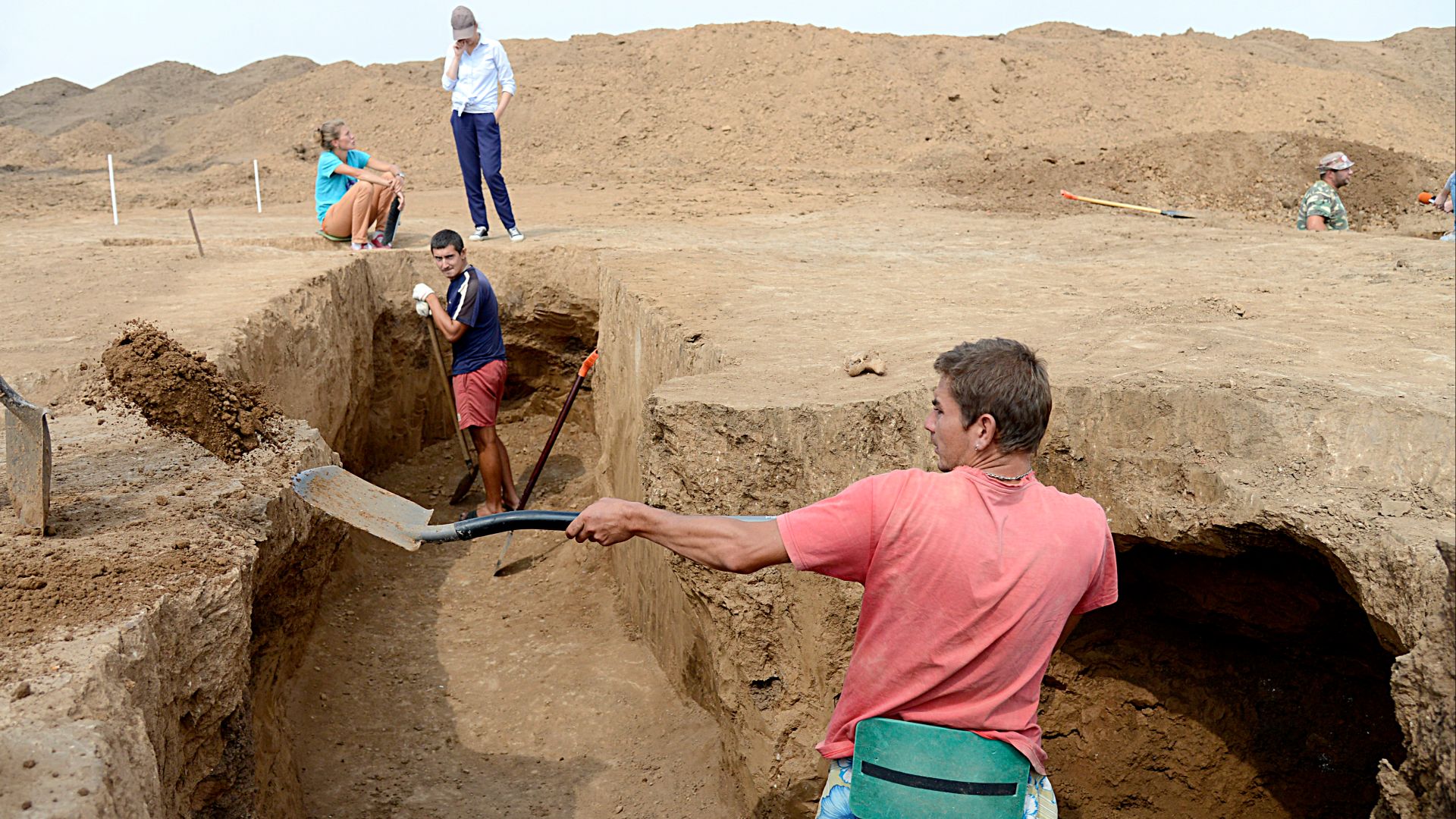 Galina Fomina, Wikimedia Commons
Galina Fomina, Wikimedia Commons
The Labyrinth Still Dazzles Minds Today
It's been over 2,500 years since Herodotus first raved about the Labyrinth, yet the fascination hasn't fizzled out. Something about a structure with 3,000 rooms, some underground, some above, sparks a primal sense of wonder. Unlike most ancient sites, this one blends mystery with scale.
Following Ancient Footsteps
Ancient Egypt isn't the only place turning heads. Explorers and scholars are connecting the dots between seemingly unrelated sites, from Giza's megaliths to the stone giants of Easter Island. What if ancient builders weren't as isolated as we assumed? This is a growing curiosity based on patterns and uncanny similarities.
That Could Share A Storyline
Egypt's sandy sprawl and Easter Island's volcanic mystery seem worlds apart. But dig deeper, and the storylines start to converge. Both feature oversized stone structures, no clear explanations for their construction, and a severe lack of inscriptions. Could that be a coincidence? Maybe. But maybe not.
A Modern-Day Bucket List Of Ancient Sites
Forget Paris and forget Bali. Today's boldest explorers have their sights set on dusty ruins and desert secrets. Sites like Hawara, Gobekli Tepe, and Easter Island aren't just for archaeologists anymore, especially for the history-hungry. These travelers want mystery, not margaritas.
The Human Drive To Uncover Lost History
There's something irresistible about an unsolved mystery, especially one buried beneath centuries of sand. Maybe it's the thrill of rewriting what we thought we knew. Or maybe, deep down, we just want to feel connected to something bigger. Lost cities and ancient structures are breadcrumbs back to who we were.
 The Lost Labyrinth of Egypt: More Mysterious Than the Pyramids? #ancientegypt by Time Travel Clup
The Lost Labyrinth of Egypt: More Mysterious Than the Pyramids? #ancientegypt by Time Travel Clup
Myth Or Monument
Ancient historians wrote about the labyrinth's endless rooms and pyramid neighbors. Herodotus claimed it outshone the pyramids. For centuries, people debated whether it ever existed. Now, with ground-penetrating radar and satellite scans, it's becoming harder to dismiss.
 The Lost Labyrinth of Egypt: More Mysterious Than the Pyramids? #ancientegypt by Time Travel Clup
The Lost Labyrinth of Egypt: More Mysterious Than the Pyramids? #ancientegypt by Time Travel Clup
From The First Written Clues
When Herodotus visited Egypt around 500 BC, he got the VIP tour of the upper Labyrinth but was denied entry to the underground levels. In his writings, he claimed there were 3,000 chambers. Whether he exaggerated or not, his account remains one of the earliest written testimonies.
 Monsieurdl at English Wikipedia, Wikimedia Commons
Monsieurdl at English Wikipedia, Wikimedia Commons
A Maze More Magical Than The Pyramids
That's not an exaggeration. It's a direct quote from Herodotus, the ancient historian who straight-up said the Labyrinth surpassed the pyramids in grandeur. That's a bold claim, but the underground spectacle at Hawara left such an impression that even the pyramids got second billing.
 The Lost Labyrinth of Egypt: More Mysterious Than the Pyramids? #ancientegypt by Time Travel Clup
The Lost Labyrinth of Egypt: More Mysterious Than the Pyramids? #ancientegypt by Time Travel Clup
Egypt's Labyrinth Was Lost And Rediscovered
Once, the Labyrinth dazzled royalty and historians. Then it vanished beneath the sands, its stones pillaged by empires and time. For centuries, it lived in stories and sketches until curious minds and radar tech brought it back into view.
 The Lost Labyrinth of Egypt: More Mysterious Than the Pyramids? #ancientegypt by Time Travel Clup
The Lost Labyrinth of Egypt: More Mysterious Than the Pyramids? #ancientegypt by Time Travel Clup
The Mudbrick Pyramid With A Megalithic Heart
At first glance, Hawara's pyramid looks… well, sad. A pile of sunbaked mud bricks and erosion scars. But looks deceive. Beneath its crumbly surface is a megalithic core built from stone blocks so massive, you'd think giants helped out. It's like finding a Ferrari engine in a rusty lawnmower.
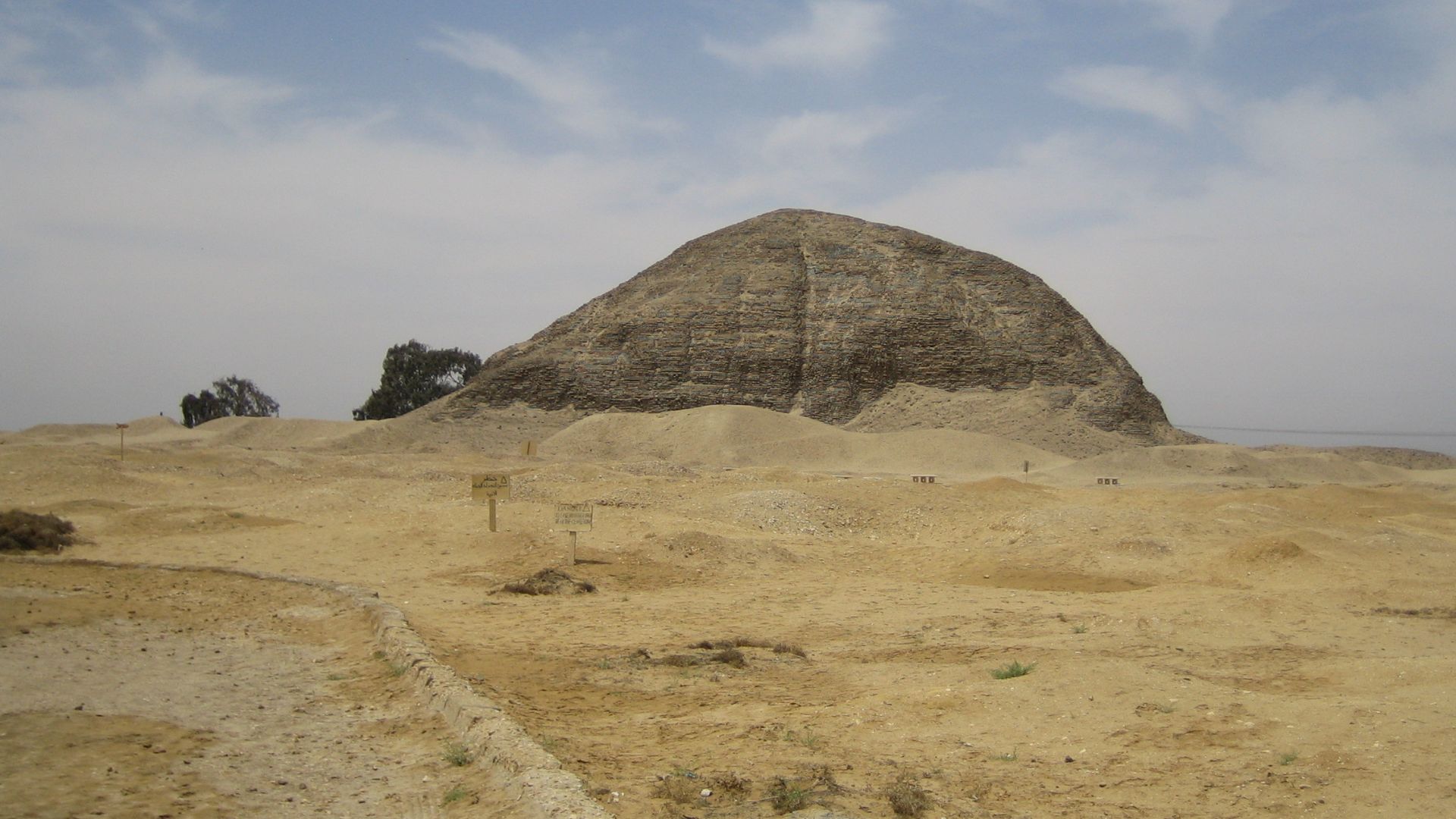 Axel Seedorff (user Aoswch), Wikimedia Commons
Axel Seedorff (user Aoswch), Wikimedia Commons
A Mysterious Crystal Quartz Sarcophagus
This isn't your standard Ancient Egyptian nap box. Deep inside the Hawara pyramid sits a colossal sarcophagus made of quartzite, 6.71 meters long, 2.4 meters wide, and 1.83 meters high. It's so large that you could host Thanksgiving dinner inside.
Sliding Stones And A Chamber Dug Into Bedrock
Inside the pyramid, three massive stone blocks could slide to seal off passages like ancient security systems. They're pretty much like Indiana Jones-style door traps. The chamber itself is carved directly into the bedrock, like a geological bunker. This isn't what you'd expect from the 12th Dynasty.
 The Lost Labyrinth of Egypt: More Mysterious Than the Pyramids? #ancientegypt by Time Travel Clup
The Lost Labyrinth of Egypt: More Mysterious Than the Pyramids? #ancientegypt by Time Travel Clup
A Structure With No Inscriptions
We love good hieroglyphics, but what about Hawara? Silent as the grave. No helpful "here lies so-and-so". It's a monument with amnesia. The only name linked to it came from furniture fragments found nearby—not the structure itself. Without inscriptions, this site floats between fact and riddle.
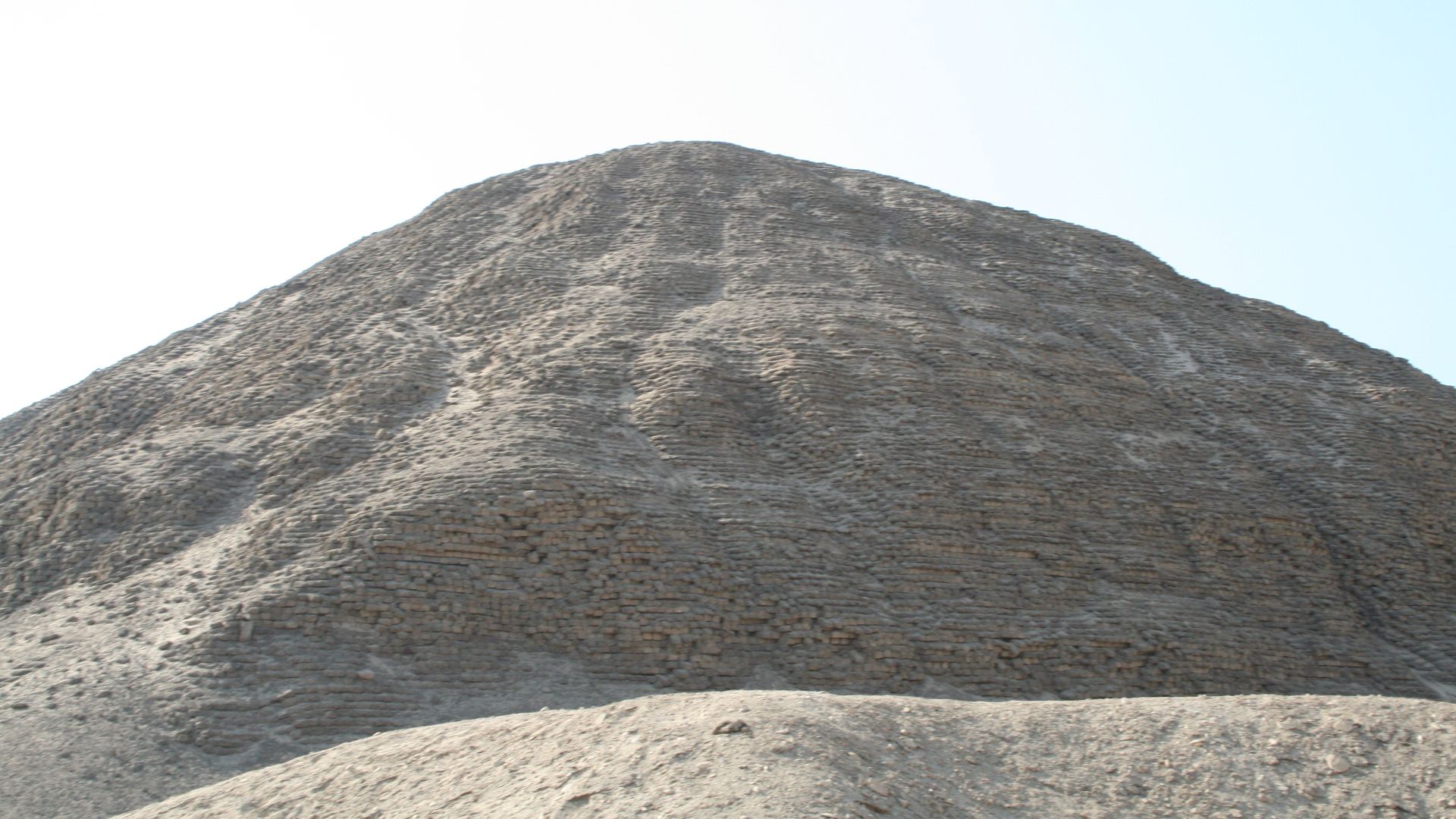 Einsamer Schütze, Wikimedia Commons
Einsamer Schütze, Wikimedia Commons
The Pyramid May Never Have Been A Tomb
While traditionally considered a tomb for Amenemhat III, some researchers speculate the Hawara pyramid may have served other purposes, though these views lack mainstream support. Could it have served another purpose—astronomical or maybe even technological?
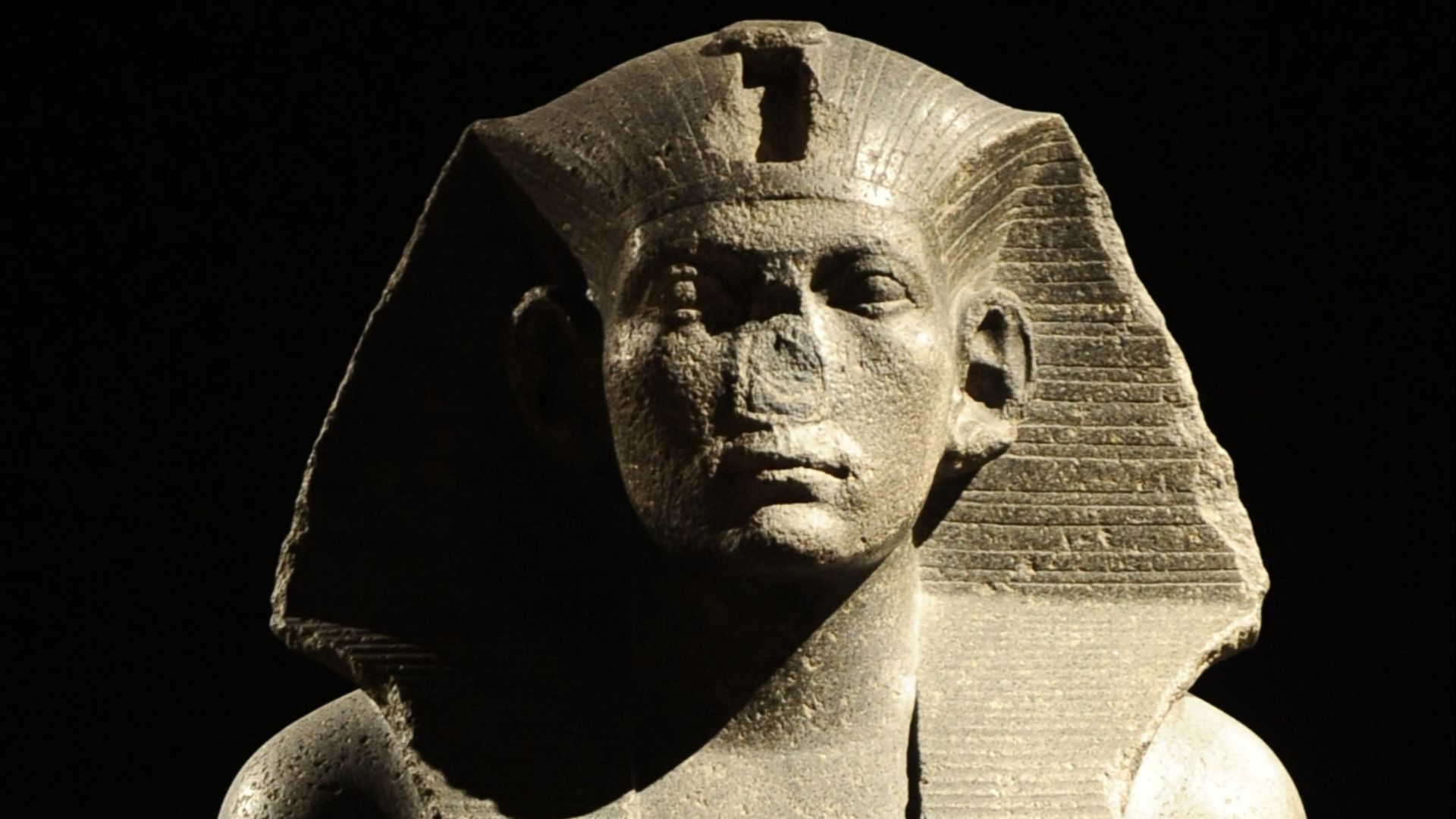 Unknown authorUnknown author , Wikimedia Commons
Unknown authorUnknown author , Wikimedia Commons
Sir Flinders Petrie, A Pioneer In Egyptian Archaeology
Before Indiana Jones was cool, Sir Flinders Petrie was digging through Egypt with a notebook and pickaxe. He documented everything. When he arrived at Hawara in the late 1800s, he didn't stumble onto gold or mummies. He found foundations that hinted at a forgotten world.
 Unknown (Life time: n.d.), Wikimedia Commons
Unknown (Life time: n.d.), Wikimedia Commons
A Roof Was Mistaken For The Foundation
Petrie Petrie identified the foundations of the Labyrinth, recording massive stone slabs and grid-like patterns. He was limited by water and technology from exploring further. Modern researchers now believe that if he'd just dug a little deeper, he might have found one of the most impressive underground complexes ever built.
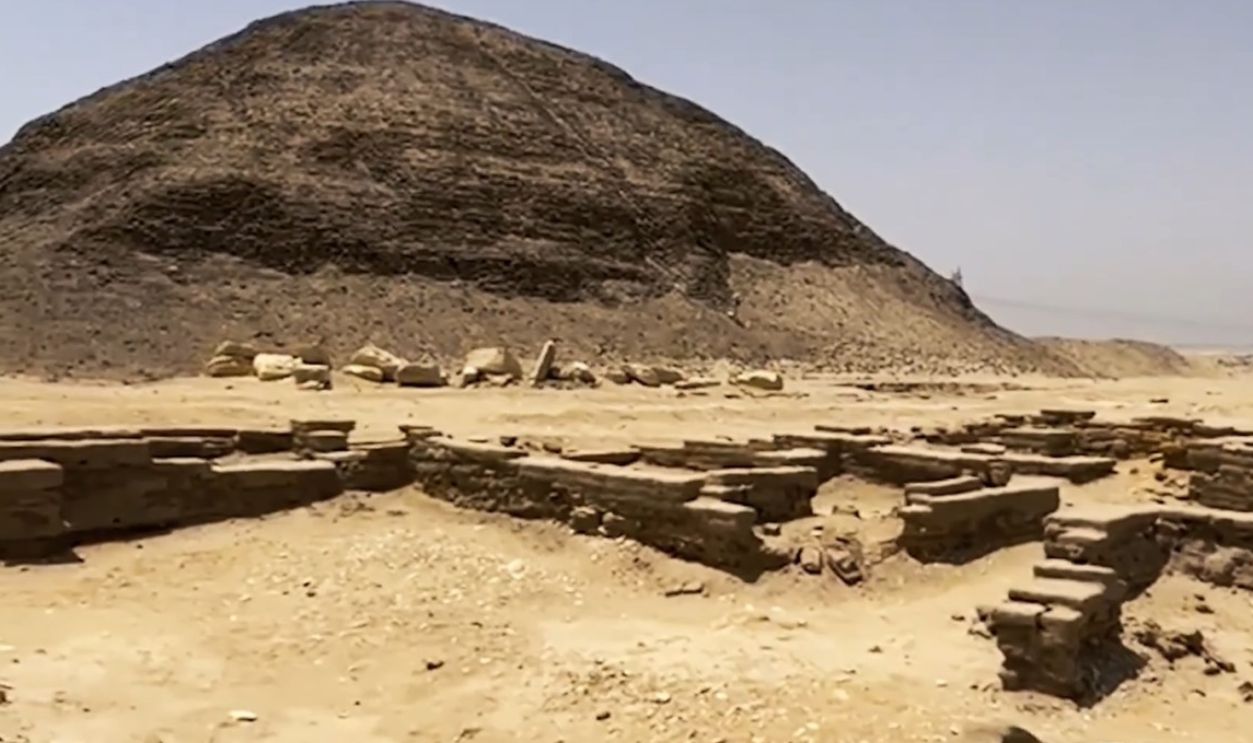 The Lost Labyrinth of Egypt: More Mysterious Than the Pyramids? #ancientegypt by Time Travel Clup
The Lost Labyrinth of Egypt: More Mysterious Than the Pyramids? #ancientegypt by Time Travel Clup
What Petrie Discovered And What He Missed
He mapped corridors and documented walls, but he never reached the prize. Petrie found evidence of something colossal and man-made beneath the sand, yet water and technology held him back. With today's tools, archaeologists are uncovering what Petrie only guessed at.
 The Lost Labyrinth of Egypt: More Mysterious Than the Pyramids? #ancientegypt by Time Travel Clup
The Lost Labyrinth of Egypt: More Mysterious Than the Pyramids? #ancientegypt by Time Travel Clup
The Significance Of A Site Now Underwater
Today, rising groundwater levels because of modern dams, have flooded much of the Hawara site. It's like Atlantis: once dry, now soaked. And has made further exploration ridiculously hard. Ancient Egyptian engineering is now at war with contemporary hydrology.
The Mataha Expedition Digging With Data
In 2008, a Belgian-Egyptian team launched the Mataha Expedition, a geophysical survey aiming to solve the Labyrinth riddle. Using advanced equipment, they mapped underground anomalies around the Hawara pyramid. What they found was structured and huge.
 Labyrinth of Egypt : Mataha-Expedition 2008 - Scanning Hawara - Fayoum by cosco
Labyrinth of Egypt : Mataha-Expedition 2008 - Scanning Hawara - Fayoum by cosco
Geophysical Evidence Of An Underground Complex
Ground-penetrating radars don't lie. The Mataha scans showed rooms and corridors hiding beneath the surface like a buried Lego set. This wasn't natural or random. However, these findings await confirmation through excavation.
 Labyrinth of Egypt : Mataha-Expedition 2008 - Scanning Hawara - Fayoum by cosco
Labyrinth of Egypt : Mataha-Expedition 2008 - Scanning Hawara - Fayoum by cosco
Seeing Beneath The Sand
Synthetic Aperture Radar, SAR for short, is satellite-based and pierces through desert sands to expose what's hiding underneath. Basically, it's like x-ray vision for archaeologists. When applied to Hawara, SAR revealed entire levels and corridors. It was like a second floor on a building no one knew had a basement.
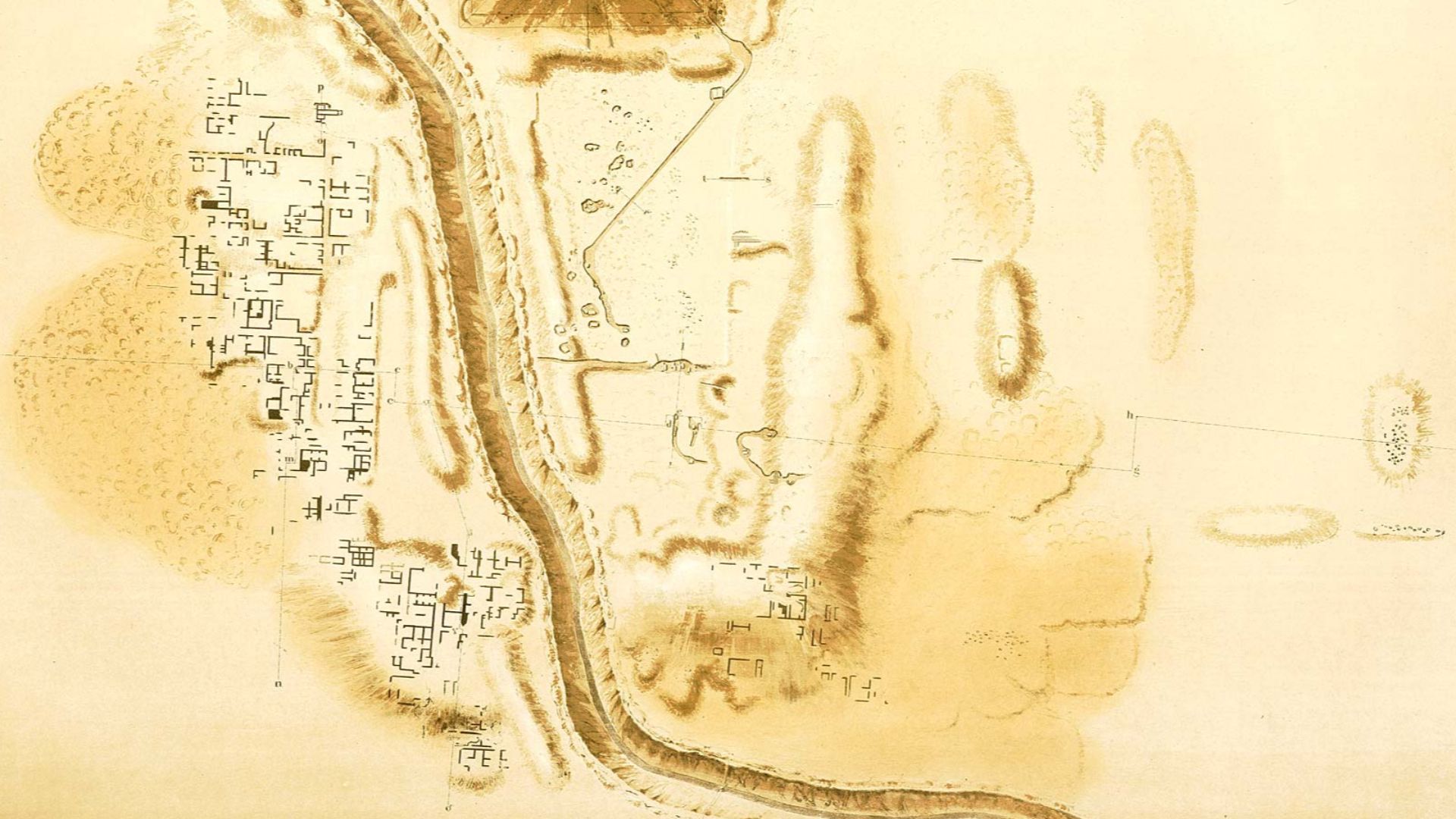 Karl Richard Lepsius (1810–1884), Wikimedia Commons
Karl Richard Lepsius (1810–1884), Wikimedia Commons
Reconstructing The Labyrinth
With the power of SAR, researchers generated multi-layered maps of the underground complex. On one layer, 31 chambers appeared like a grid. Beneath that, 32 more. Five of those rooms are massive (maybe enough to host a high school basketball game). However, this data wasn’t peer-reviewed, so the specifics are speculative.
 The Lost Labyrinth of Egypt: More Mysterious Than the Pyramids? #ancientegypt by Time Travel Clup
The Lost Labyrinth of Egypt: More Mysterious Than the Pyramids? #ancientegypt by Time Travel Clup
The Blue And Red Zones
The paper claims that scans revealed not one, but two entire underground layers beneath Hawara. Researchers dubbed them the Blue Level and the Red Level, based on imaging contrasts. Each level contains dozens of chambers, which are big and weirdly clean in their layout.
 The Lost Labyrinth of Egypt: More Mysterious Than the Pyramids? #ancientegypt by Time Travel Clup
The Lost Labyrinth of Egypt: More Mysterious Than the Pyramids? #ancientegypt by Time Travel Clup
Featuring A Subterranean Network Of Wonder
Together, the Blue and Red levels contain 63 individual chambers. That's 63 chances to uncover relics and jaw-dropping anomalies. Some rooms are small and orderly. Others stretch out like they were designed for giants. Nevertheless, there are hieroglyphs or instructions.
 The Pyramid, the Labyrinth and the underground Caches of Hawara - VERSADOCO by Versadoco
The Pyramid, the Labyrinth and the underground Caches of Hawara - VERSADOCO by Versadoco
1.4 Kilometers Of Underground Passageways
Get ready for a hike because the total length of tunnels and corridors beneath the Hawara site clocks in at 1.4 kilometers. That's almost a mile of ancient underground engineering. They're wide, tall, and built with purpose. Why build such an elaborate maze beneath a seemingly modest pyramid?
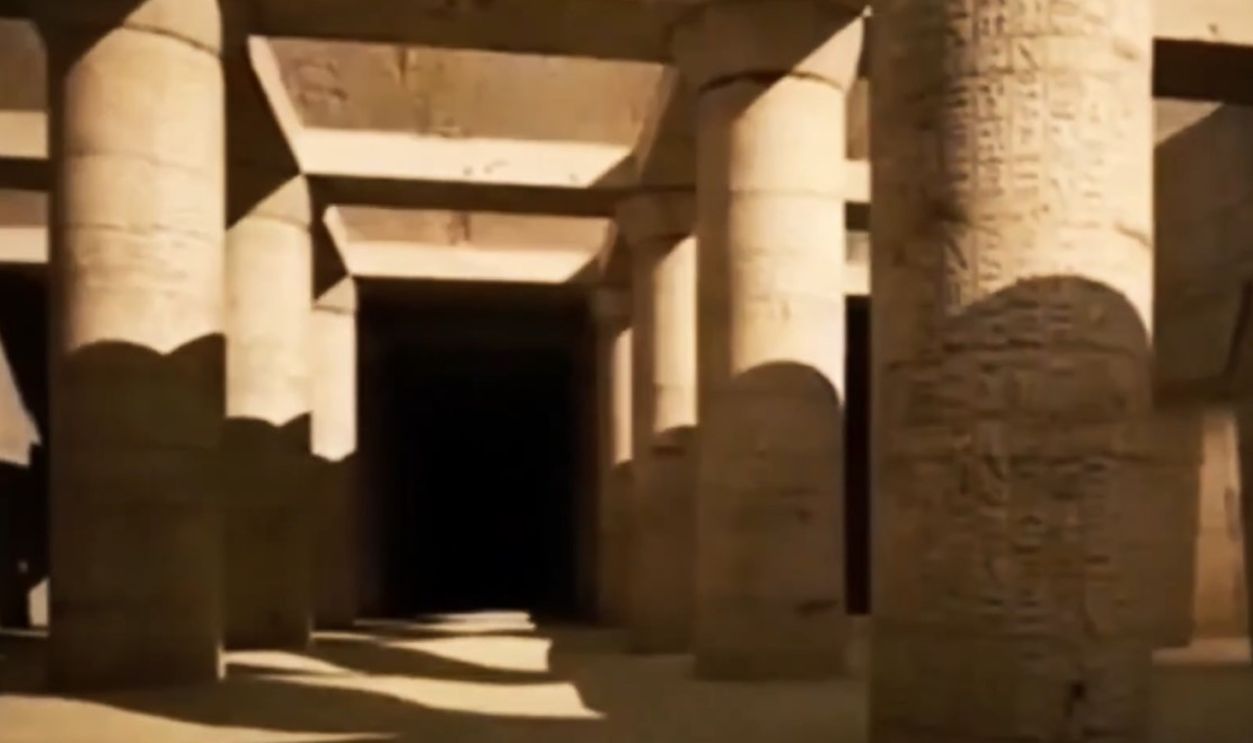 The Pyramid, the Labyrinth and the underground Caches of Hawara - VERSADOCO by Versadoco
The Pyramid, the Labyrinth and the underground Caches of Hawara - VERSADOCO by Versadoco
But The Pyramid And Labyrinth Don't Line Up
You'd think an underground complex and the structure above it would, you know… line up. Not at Hawara. The pyramid is offset from the labyrinth, as if someone moved the house but forgot the basement. That misalignment has researchers wondering: were they built by different groups? At different times?
 The Pyramid, the Labyrinth and the underground Caches of Hawara - VERSADOCO by Versadoco
The Pyramid, the Labyrinth and the underground Caches of Hawara - VERSADOCO by Versadoco
Alignment Anomalies Across The Faiyum Region
Zoom out from Hawara, and the weirdness spreads. Across the Faiyum depression, multiple ancient sites don't align with each other or with cardinal directions. Some lean, and others twist. One thing's certain: the Ancient Egyptians, or whoever came before, weren't laying bricks at random.
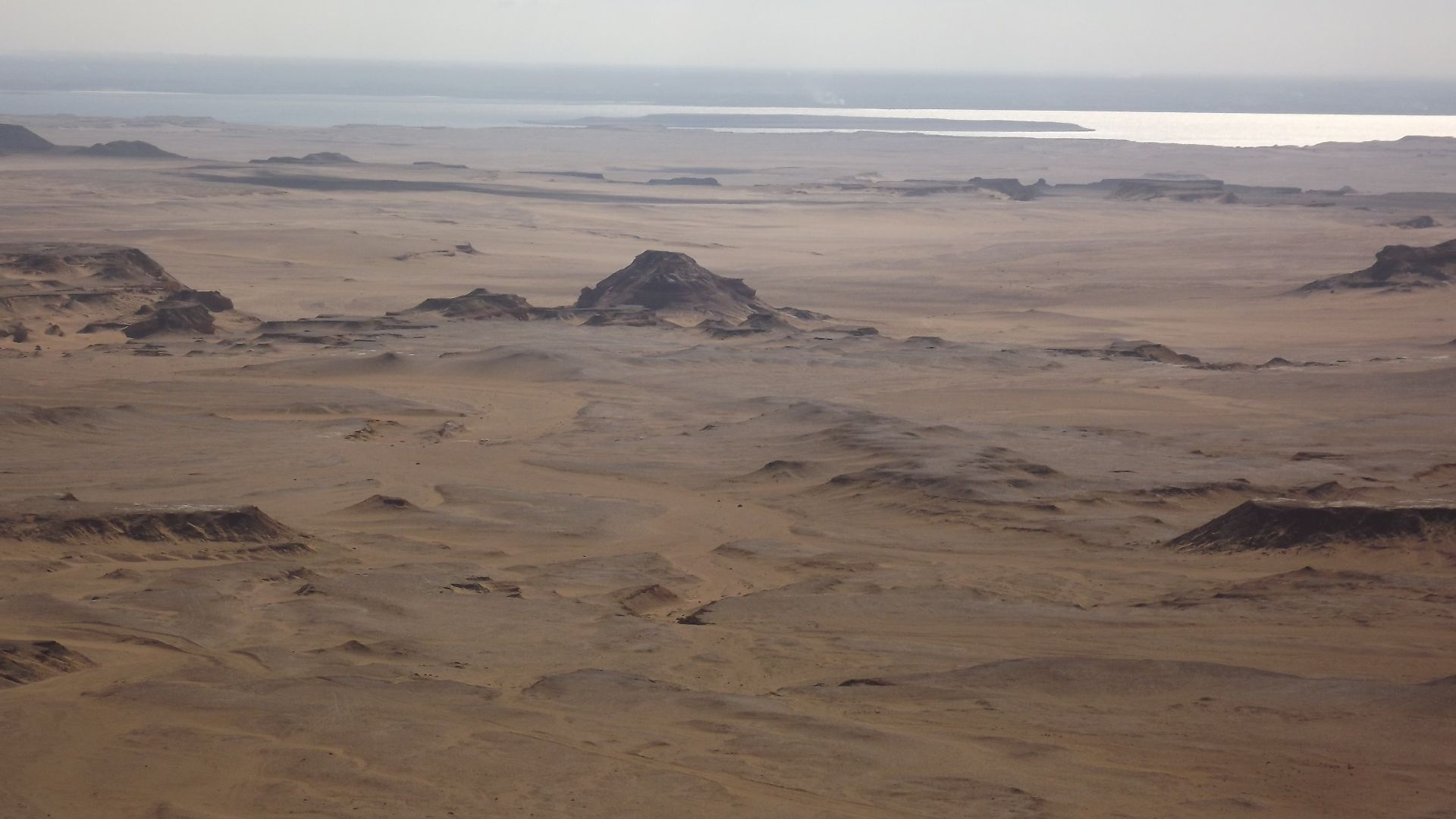 Hatem Moushir, Wikimedia Commons
Hatem Moushir, Wikimedia Commons
Minor Lunar Standstills And Cosmic Connections
Lunar standstills are slow-motion moon wobbles over 18.6 years. Some Faiyum structures are aligned with this rare event, suggesting astronomical knowledge way beyond basic stargazing. This isn't common in later Egyptian structures, which makes the Faiyum layout even more suspiciously advanced.
 Jessie Eastland, Wikimedia Commons
Jessie Eastland, Wikimedia Commons
How Ancient Builders Might Have Tracked The Heavens
Before telescopes and apps, some ancient builders used rocks like rulers. Alignments at Faiyum suggest the use of early observational astronomy to track the moon, the stars, and maybe even pole shifts. That kind of precision took generations of watching and applying cosmic math to architecture.
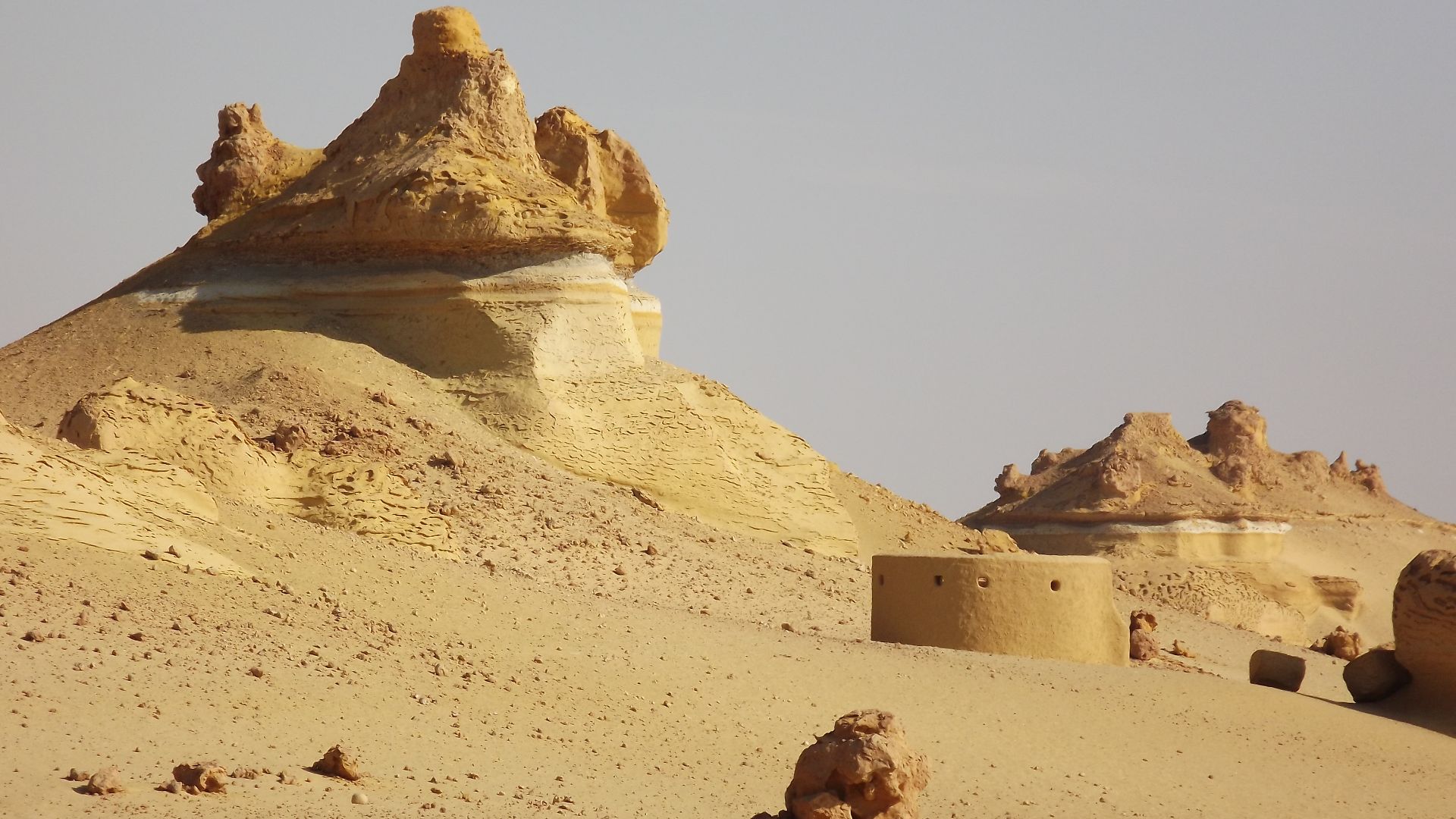 Hatem Moushir, Wikimedia Commons
Hatem Moushir, Wikimedia Commons
Pre-Ice Age Civilizations Could Be A Possible Reality
Say goodbye to the idea that civilization started around 5,000 years ago. If the structures beneath Hawara are older than we think, they could date back to pre-Ice Age times, before "civilized" was even a word. Some researchers believe advanced societies may have existed and disappeared long before recorded history.
 Oleg Kuznetsov - 3depix - http://3depix.com/, Wikimedia Commons
Oleg Kuznetsov - 3depix - http://3depix.com/, Wikimedia Commons
Hapgood's Crustal Displacement Theory Revisited
In the 1950s, Charles Hapgood proposed a theory that was so wild that Einstein raised an eyebrow. He suggested Earth's crust could shift, messing with global geography. While controversial, some researchers use this to explain why ancient sites are aligned to poles that no longer exist.
Could These Sites Be 20,000+ Years Old?
If the alignments at Hawara and nearby sites really match ancient pole positions, they might just be older than 20,000 years. That places them deep into the last Ice Age, before Mesopotamia and Stonehenge. Mainstream archaeology doesn't play ball with these dates, but the math is compelling.
 The Pyramid, the Labyrinth and the underground Caches of Hawara - VERSADOCO by Versadoco
The Pyramid, the Labyrinth and the underground Caches of Hawara - VERSADOCO by Versadoco
A Desert Structure With No Name
Sitting in the Egyptian desert like an unsolved riddle: Qasr El-Sagha is downright eerie. Composed of massive limestone blocks and zero inscriptions, this mysterious site has baffled archaeologists for decades. No one knows who built it, when, or why. It doesn't follow typical Ancient Egyptian styles.
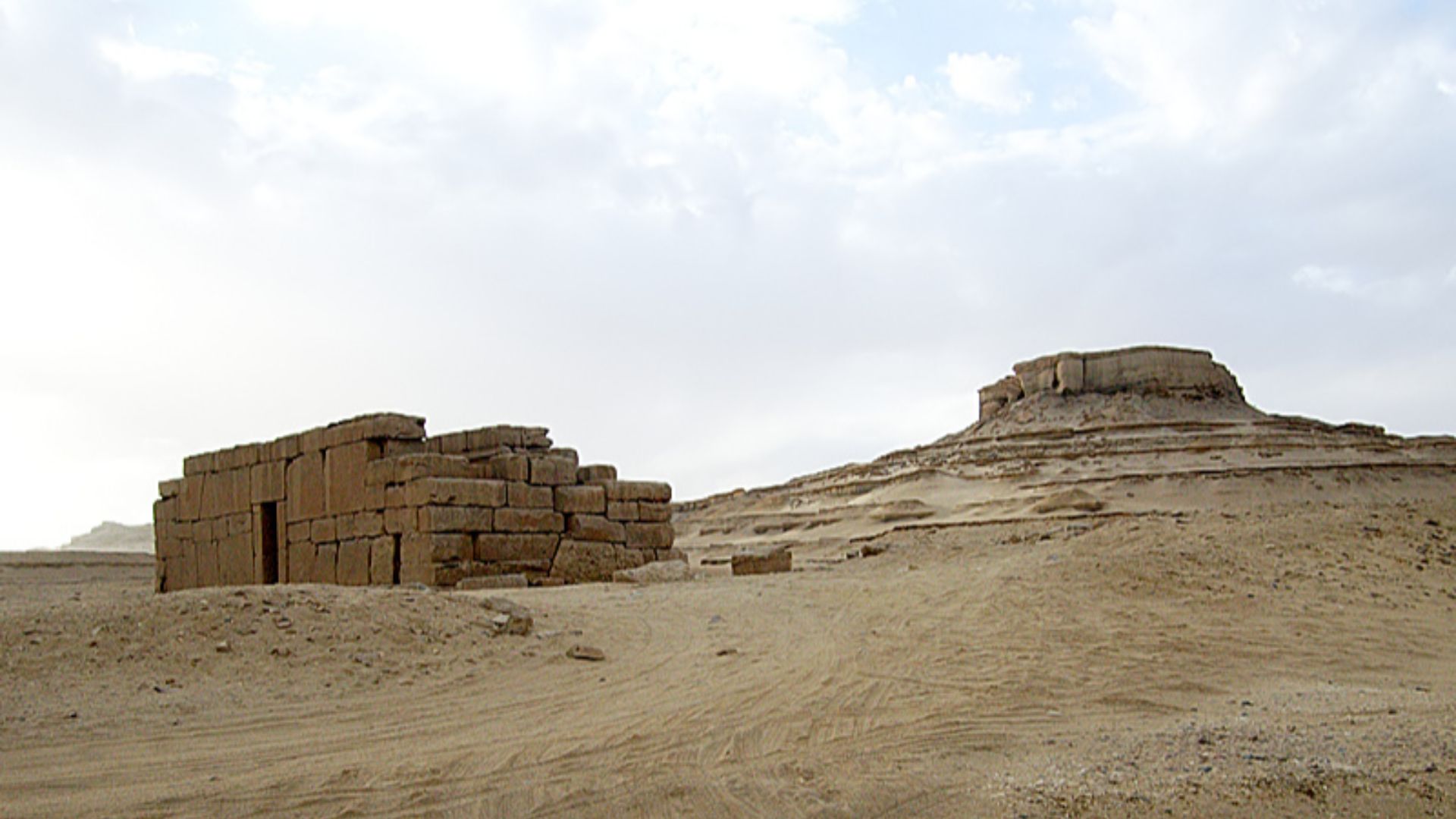 Roland Unger, Wikimedia Commons
Roland Unger, Wikimedia Commons
The City Of The Past With A Lunar Link
Madinet Madi translates to "City of the Past," which feels wildly appropriate. Located deep in Faiyum, this ancient site features alignments not to cardinal directions but to the moon. Specifically, its axis syncs with lunar standstills, hinting at sky-watching knowledge hidden in stone. No one's sure if it was a temple or observatory.
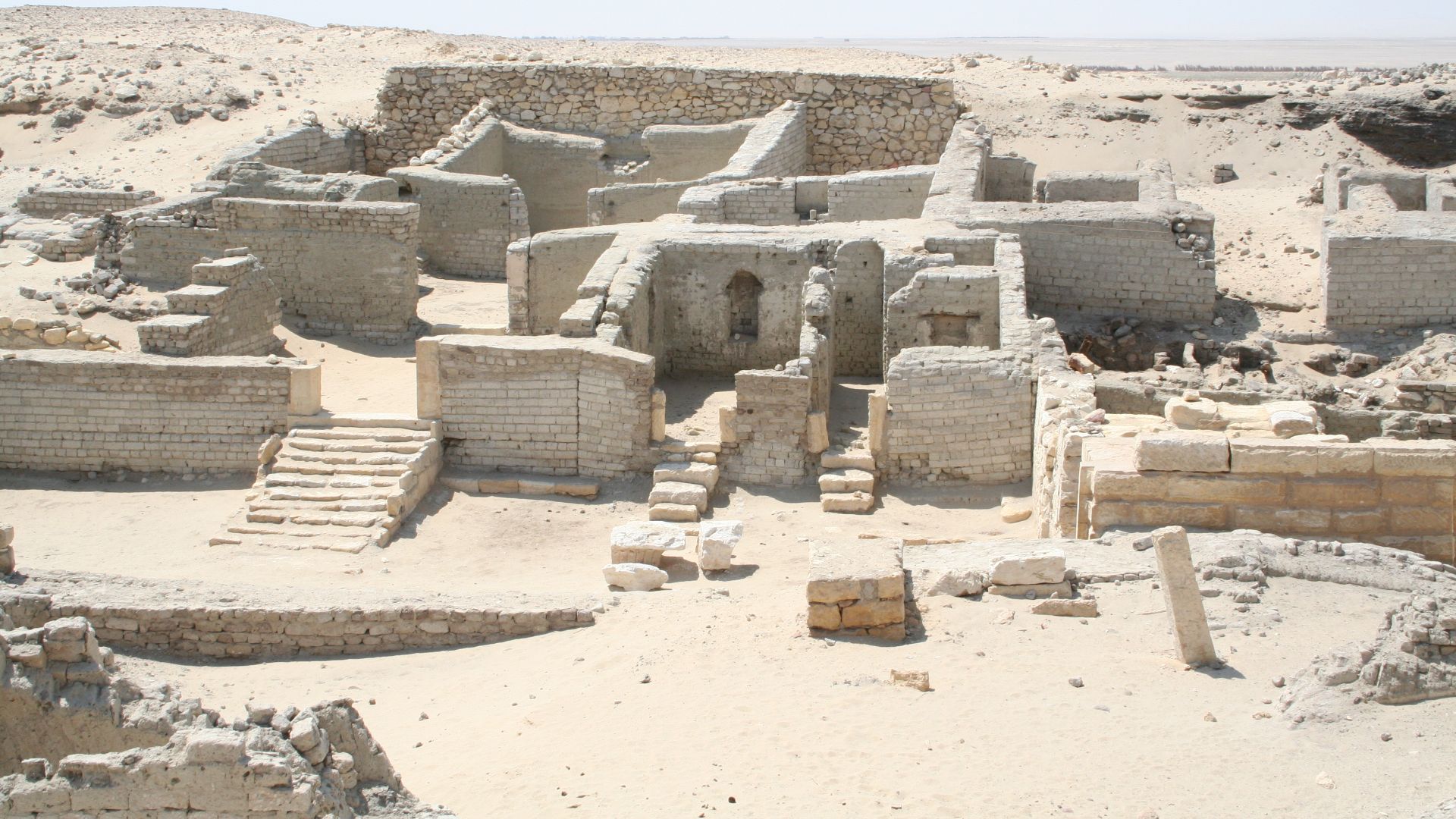 Einsamer Schütze, Wikimedia Commons
Einsamer Schütze, Wikimedia Commons
The Role Of Lake Moeris In Ancient Site Placement
Thousands of years ago, Lake Moeris stretched much wider than it does today, and ancient sites like Hawara, Qasr El-Sagha, and others were all conveniently parked near its ancient shoreline. That's not random. It suggests a strategic placement of settlements or sacred sites around natural landmarks.
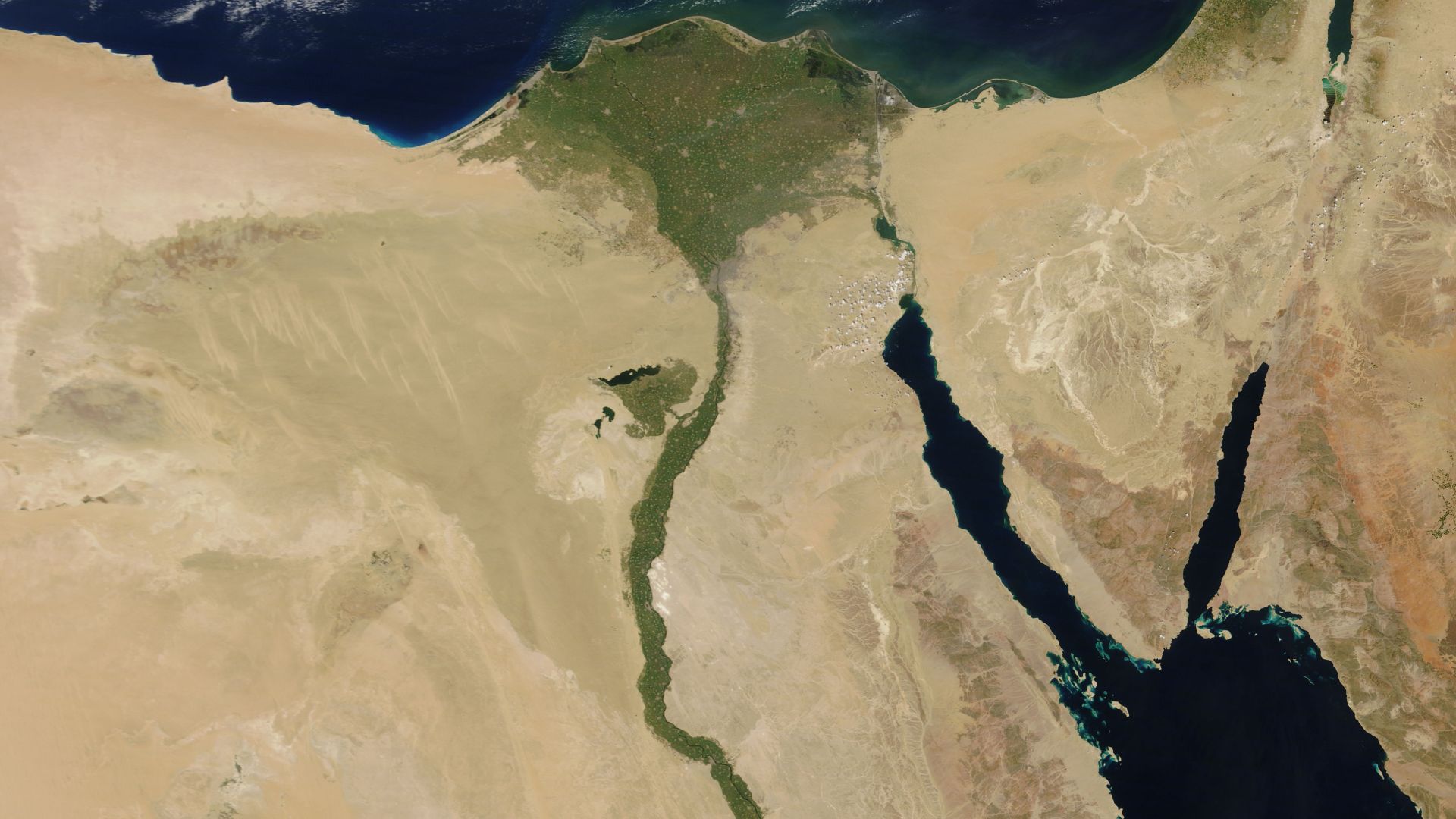 NASA Goddard Space Flight Center from Greenbelt, MD, USA, Wikimedia Commons
NASA Goddard Space Flight Center from Greenbelt, MD, USA, Wikimedia Commons
Remnants Of A Lost Global Network
Imagine a civilization or even a loose alliance of ancient cultures that stretched across oceans and epochs. Could Hawara be one node in a prehistoric global web? With similarities in building techniques and astronomical alignments across continents, some researchers think it's more than a coincidence.
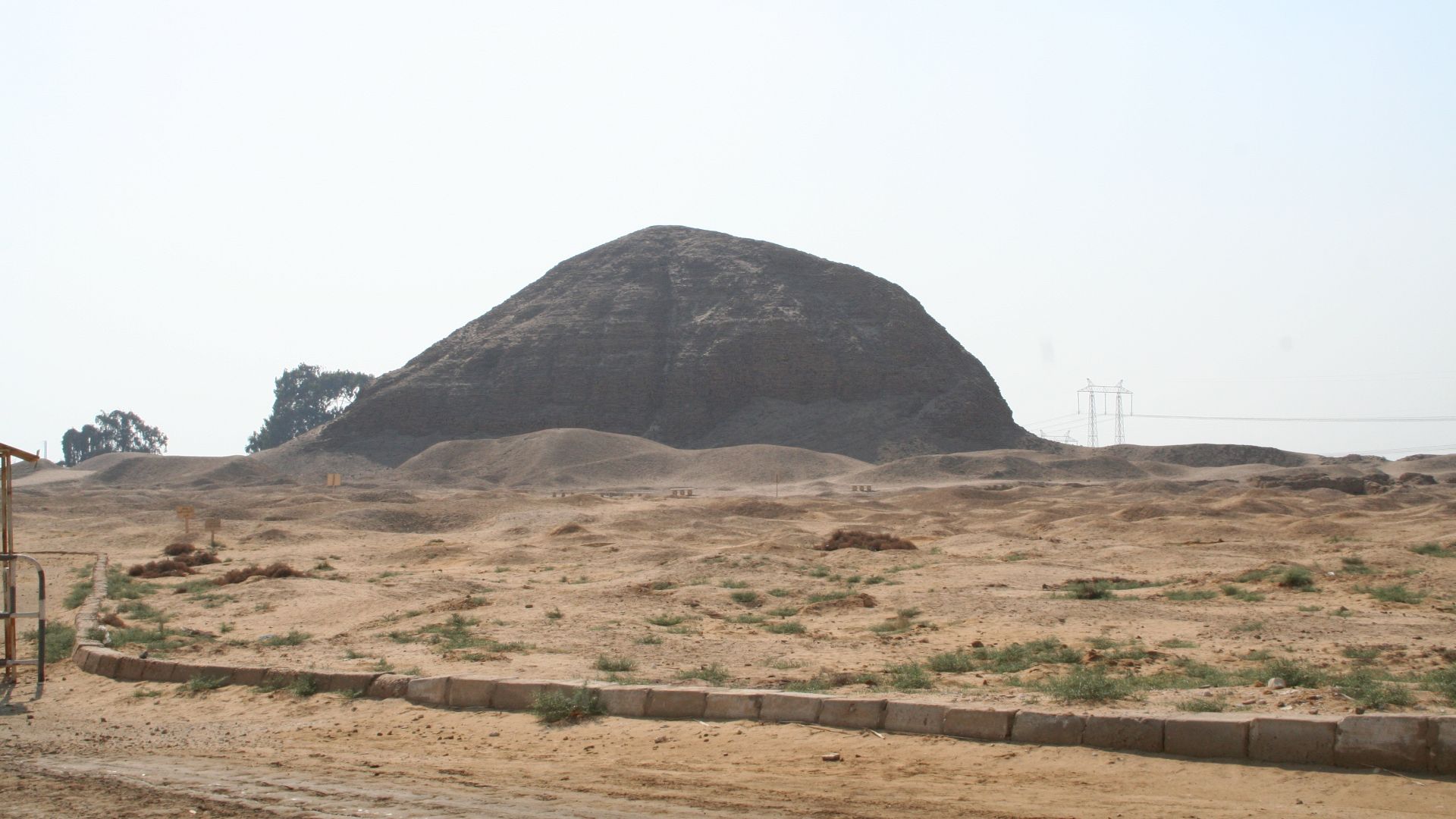 Einsamer Schutze, Wikimedia Commons
Einsamer Schutze, Wikimedia Commons
What Might Still Be Hiding Beneath The Sand
The Sahara is enormous. And most of it remains unexplored beneath the surface. If one ancient labyrinth sat quietly underground for millennia, what else might be lurking out there? With satellite technology getting sharper every year, there's a real chance we're on the edge of a discovery boom.
Could It Be The Next Atlantis?
While Hawara doesn't sit underwater (yet), the Sahara might be hiding something just as legendary. Some researchers believe entire civilizations could be buried beneath those endless dunes, waiting for the right scan and expedition. The next Atlantis? It could be chilling in North Africa, wearing a sand coat.
Science And Storytelling Bridging The Worlds Of Past And Present
At the intersection of hard science and ancient tales lies something powerful: possibility. When data meets mythology, we start asking better questions instead of just "what-ifs". The Labyrinth of Hawara might've been a legend, but now, it's also a geophysical anomaly.
 The Lost Labyrinth of Egypt - The Findings by Funny Olde World
The Lost Labyrinth of Egypt - The Findings by Funny Olde World
The Beginning Of A New Chapter In Human History
This isn't the end of the story; it's page one. Ongoing research at Hawara may deepen our understanding of Ancient Egyptian architecture, but significant revisions to human history await confirmed discoveries. Whatever the truth is, it's waiting in the sand.
 Labyrinth of Egypt : Mataha-Expedition 2008 - Scanning Hawara - Fayoum by cosco
Labyrinth of Egypt : Mataha-Expedition 2008 - Scanning Hawara - Fayoum by cosco



